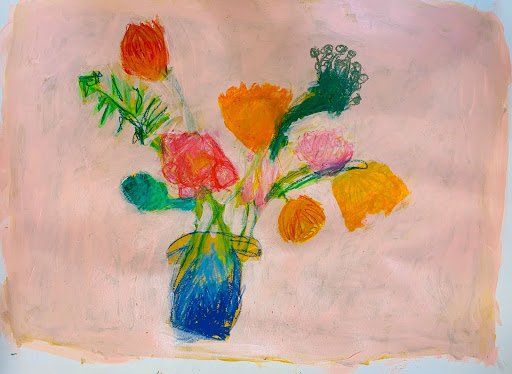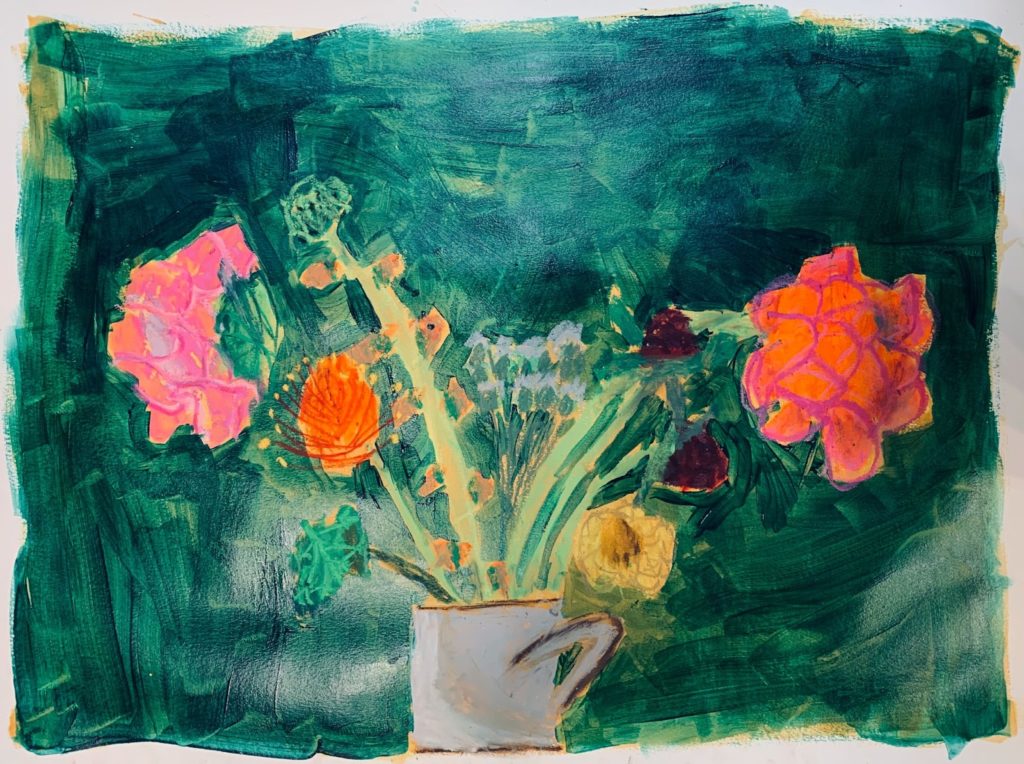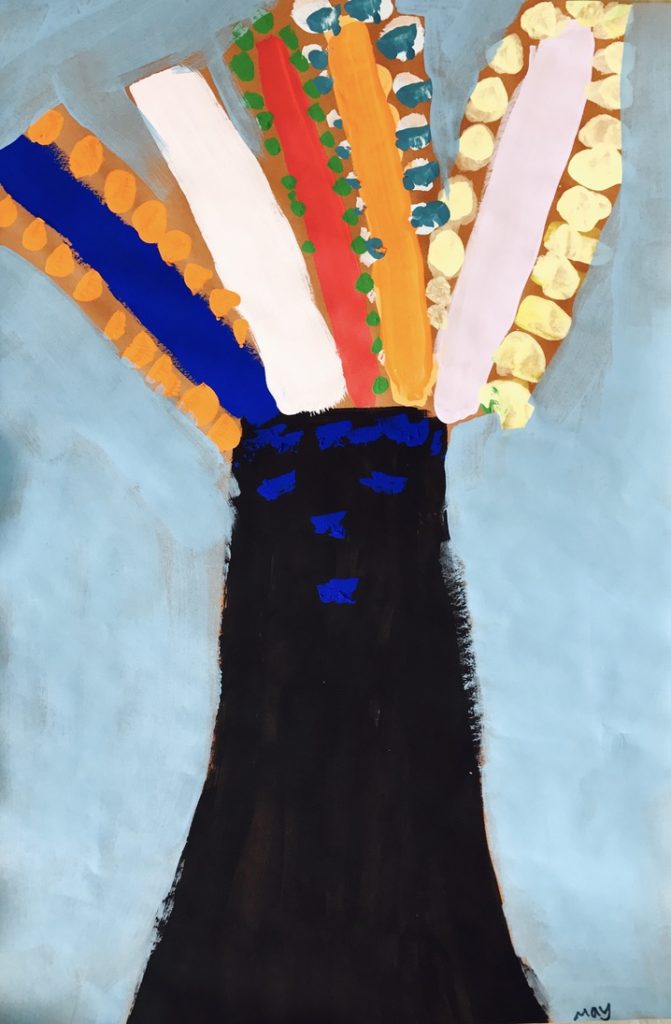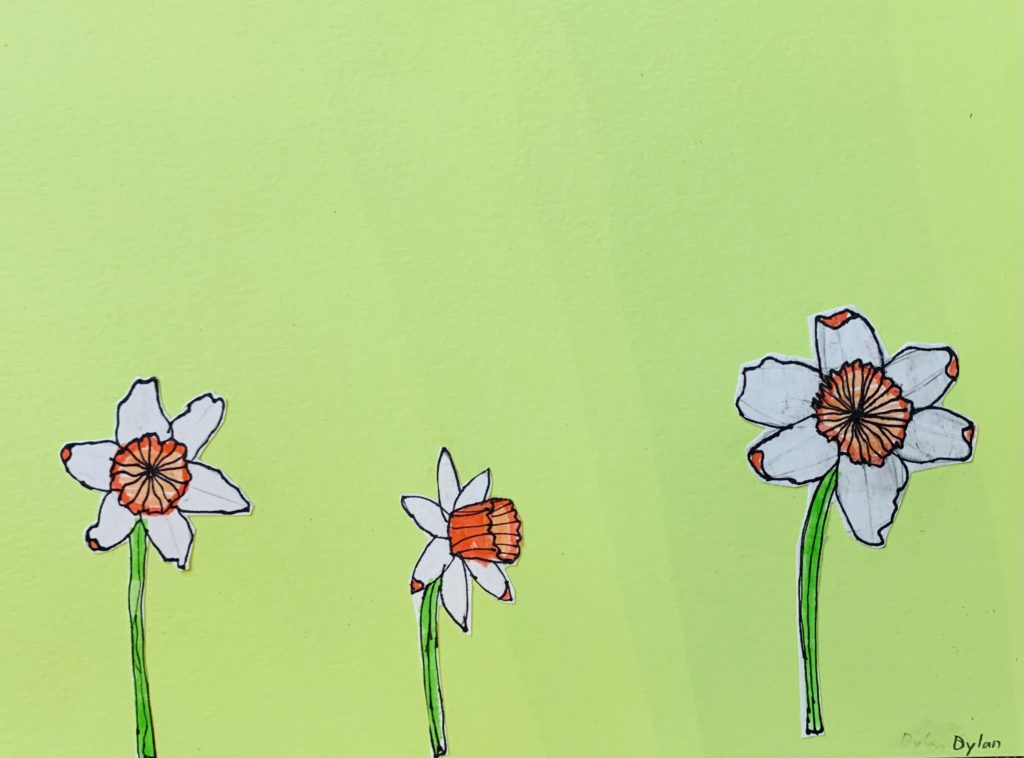Drawing what we see is a skill that makes us both better see-ers and better draw-ers. We are breaking down what we see into parts and reconnecting them into a whole in the time that we record it all. It’s a puzzle, a problem, a prompt that stimulates curiosity. The art activity is the opposite of judgment and determining value. Instead, the process permits the realization of the inherent value – not just the value of the object being observed, but also the value of the experience of observing it.
In this exercise, the artists first observed and recorded the large shapes and arranged them on the paper as they saw them. Then, they noticed the form and used light, medium, and dark to show the shape of each flower. Then, they saw the texture. They added the marks and details unique to each flower in the arrangement. In this sequence, the artists also painted the negative space twice. Before beginning, they washed a ground tone on the paper. Then, after drawing the arrangement they re-declared the space around the flowers and stems and vase.

Resources/references:
Miroco Machiko
Sandrine Pelissier
Lulie Wallace



